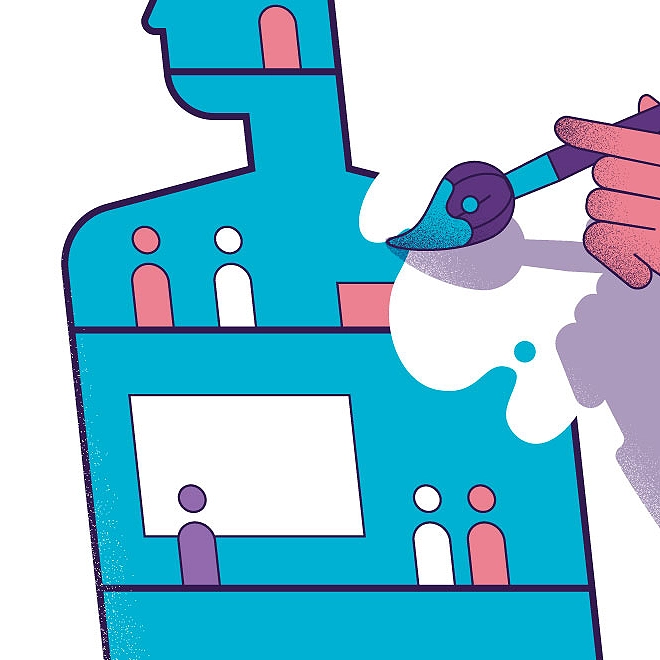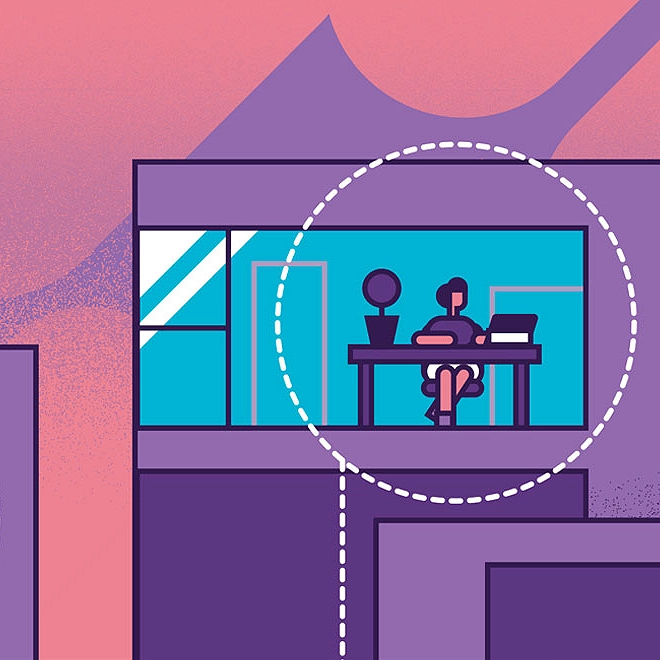Looking ahead: Where is reinvention headed?
2019 Global Human Capital Trends
THIS year’s Global Human Capital Trends report argues that, to create value as a social enterprise in today’s dynamic and demanding environment, organizations must reinvent themselves—with a human focus—on three fronts: the workforce, the organization, and HR. The 10 trends we highlight in these areas are of immediate concern to business and HR executives, issues on which leaders are being pushed to act today. But where will they take organizations five or 10 years from now, when the forces now at work have had more time to play out?
To set priorities for reinvention, we suggest that leaders first “zoom out” to envision their organization, its challenges, and its place in society in 10 years’ time, considering where they want the organization to be as well as the factors that may help or hinder its progress. Accordingly, we invite readers to “zoom out” with us to think about what each of the three areas for reinvention—the workforce, the organization, and HR—might look like, or should look like, a decade ahead. Then, leaders can “zoom in” to identify two or three key initiatives in one or more of these areas that they can undertake within the next six to 12 months. These initiatives should be designed to solve short-term problems in a manner that will accelerate the path to the organization’s long-term destination.1
The future of the workforce
Over the next 10 years, perhaps less, many organizations will redesign jobs to better enable their people to work alongside smart machines, robots, and new forms of off-balance-sheet talent (from freelancers to gig workers to crowds). Organizational leaders and public sector policymakers should ask a range of critical questions to help guide and govern this reinvention of the workforce, including:
- What are the current and future work outcomes that organizations need to deliver?
- How can we reimagine and recompose:
- Work, to automate work and augment the workforce with robotics and AI?
- The workforce, to effectively access and deploy talent using the full range of traditional and alternative work arrangements?
- The workplace, to extend where and how work is performed using virtual collaboration platforms, remote communications tools, digital reality, and other technologies?
- To what end are we redesigning work? For efficiency and cost improvement? To create new value for customers? To create meaningful work for employees and the extended workforce?2
- How can an organization activate its leaders, its culture, and its talent processes to manage a redesigned workforce that integrates people and machines into a new way of working?
- What are the organizational and social implications of a potential bifurcation of work into “superjobs” and lower-skilled service sector jobs?
The future of the organization
Organizational strategies and cultures have been undergoing a dramatic shift from hierarchies and “command and control” mindsets to people practices that use empowered networks of teams to enable enterprise agility. As this shift continues, we see several areas where organizational leaders may need to reinvent their strategies and structures:
- How does the organization integrate into, and differentiate its role in, the larger networks and platforms in its sector and industry—and even beyond? Where does your organization start and end with respect to others in the ecosystem?
- How can organizations create informal systems that take advantage of the way people naturally behave to drive experimentation, innovation, and idea generation, and to maintain a happy and productive workplace?
- How can teams be placed at the center of the organization’s performance and development?
- How can organizations develop leaders who have the mindsets, attitudes, and experiences needed to create the conditions for teams to be iterative, open, inclusive, and, ultimately, effective?
- How can organizations design jobs, work experiences, and work environments that allow individuals to grow and find meaning in their work and in their relationships with the organization?
The future of HR
Work and organizations will still exist in 10 years, though likely in new forms. What about HR? How will the mission and work of HR evolve? A number of open questions can be posed about the future for HR and its role in people and workforce management:
- What will the future HR organization be responsible for? Will HR redesign jobs? Organize work? Drive growth? Deploy and develop teams? Integrate learning and work?
- What capabilities will HR require to carry out these responsibilities?
- How will HR cultivate workforce engagement? In a future defined by multiple talent models across multiple worker types, how will HR partner with business leaders to create integrated, meaningful, work and learning experiences for people whose careers may span 50 years in a 100-year life?
- With the rise of the social enterprise, how does the organization’s talent brand relate to its corporate brand? What is the envisioned relationship between the HR, marketing, and customer experience organizations? Is there still a CHRO, CMO, and CCO, or do these executive roles morph into new ones?
- Given that HR models and operations have historically been based on stable business processes and staffing models, how will HR operations need to be reimagined in a world of constantly shifting networks and teams?
- How will HR operations need to change in order to access, curate, and engage a workforce that includes both traditional employees and a variety of alternative worker types?
- How will HR use technology, including AI technology, to reinvent itself? How can this enable HR to lead the reinvention of the business?
- Will HR continue to exist in its current form, or even at all?
Reinvention with a human focus offers a path forward through the challenges and uncertainties facing organizational and HR leaders. We see the future belonging to leaders who can look ahead and define a destination that works for their organizations, their customers, their people, and society at large. Zooming out and zooming in, and asking hard questions about the trends affecting organizations today and tomorrow, is critical to moving forward.
Human Capital
Deloitte's Human Capital professionals leverage research, analytics, and industry insights to help design and execute the HR, talent, leadership, organization, and change programs that enable business performance through people performance.
Learn more


